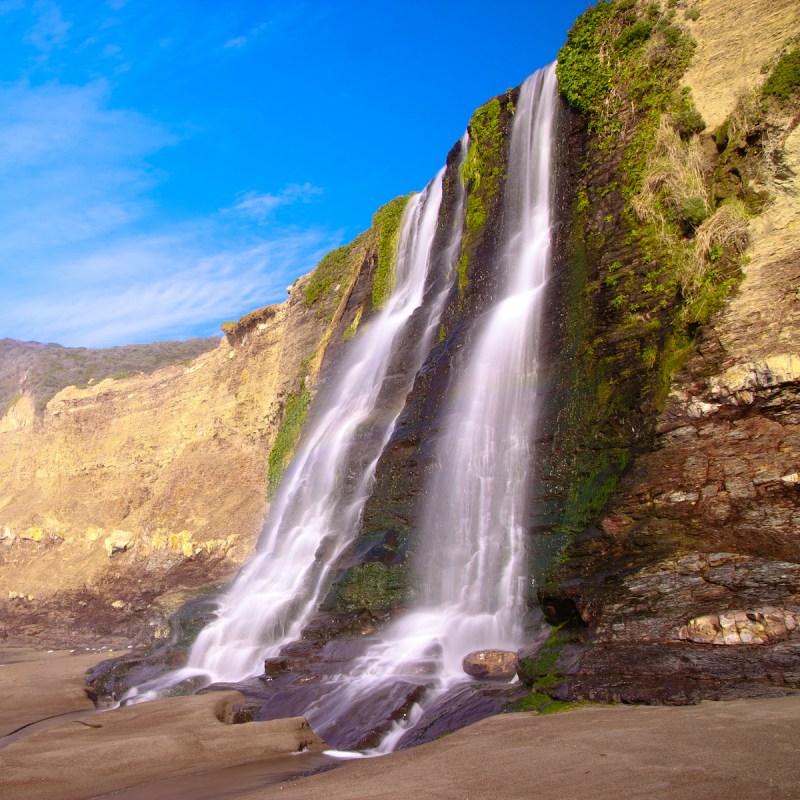
Point Reyes National Seashore, which is 30 miles north of San Francisco, is famous for its beaches and the historic Point Reyes Lighthouse. The Point Reyes Headlands extend 10 miles out into the sea, which poses a hazard for ships traveling between San Francisco Bay and locations to the north. The lighthouse was built in 1870 to warn mariners.
Videos by TravelAwaits
What many people don’t realize, however, is that there is much more to the park. For instance, the area — which includes beaches as well as grasslands, hillsides, and forested ridges — is home to more than 1,500 species of plants and animals. The park also features more than 150 miles of trails, four backcountry campgrounds, and numerous historical buildings.
Fortunately, the National Park Service has released its “Top 10 Tips for Visiting Point Reyes,” written by the rangers who work there, to help visitors plan their trips.
“‘Plan like a park ranger’ with our insider tips for a safe and successful visit to the Seashore,” the rangers write. “We’re expecting an especially busy summer season and want everyone to have a great experience. A little advance trip planning can ensure that your only surprises are happy ones.”
Let’s jump right in. Here are the park rangers’ top 10 tips for planning a trip to Point Reyes National Seashore.
1. Use The NPS App!
“Skip the line and learn about things to do and places to visit in our new app — developed by us!” the Point Reyes rangers write. “It puts trail maps, hiking guides, alerts, and other information at your fingertips. You can even download content from entire parks for offline use when you don’t have cell service”
You can learn more about the NPS App here.
2. Make Backup Plans
“Close to 2.4 million people visit Point Reyes each year,” the rangers explain. “Plan your trip for midweek or plan to arrive early in the morning so you can beat the crowd. If that’s not possible, be sure to have a ‘Plan B’ or even ‘Plan C.’ For example, make plans for several possible hikes — just in case you arrive at your preferred trailhead and the parking lot is already full.”
Pro Tip: You can learn more about the rangers’ suggestions for hikes here. The hikes are even broken down by the amount of time you have, habitats you want to see, and locations.
3. Expect Wind And Fog — Always
“The temperature 10 miles inland may be in the triple digits, but it can be between 50 degrees and 60 degrees on the coast,” rangers explain. “Point Reyes is the windiest and foggiest place on the west coast, especially during the summer. Be sure to check the weather forecast and views of the coast using our Point Reyes Beach webcam. And bring cozy layers — it could be quite chilly!”
You can learn about current weather conditions at Point Reyes here.
You can find the webcam with its view from the lighthouse visitor center here.
4. Keep An Eye On Conditions
“After a year of closures, most of Point Reyes is open for your enjoyment. However, while you may have your heart set on visiting a particular spot in the park, sometimes there are circumstances that throw a wrench into the best laid plans,” the rangers note. “Make sure to check current conditions and look for any closures that may be in place before your visit.”
Several areas, buildings, and roads are currently closed or subject to managed access. You can find updates on closures here. You can also check current conditions here.
5. Looking For Instagram Highlights?
Point Reyes Cypress Tree Tunnel, “shipwreck,” and South Beach Overlook are all popular destinations for social media posts, the rangers note.
“Social media has a bigger impact than you think, so please post appropriate and responsible behaviors,” the rangers ask visitors. “Post your highlights while supporting the mission of the National Park Service. Be sure to also take the Point Reyes Pledge and adhere to the principles of Leave No Trace.”
The rangers also explain that: “Drones are not allowed anywhere in the Seashore, so leave your drones at home.”
You can learn about NPS’ mission here, the Point Reyes Pledge here, and the principles of Leave No Trace here.
6. Coyotes, Badgers, And Bobcats — Oh My!
“Point Reyes has incredible opportunities for wildlife sightings,” the rangers note. “Be sure to observe wildlife respectfully and from a distance. And remember to park your vehicle completely off the road when viewing wildlife from your car.”
You can find the rangers’ tips for viewing wildlife and how to respect wildlife in the process here.
7. Be Wave Wise
“The beaches at Point Reyes are known for their beauty, but remember that people have been swept away by large waves — and there also are strong rip currents,” the rangers explain. “To be safe, never turn your back to the ocean, and watch out for ‘sneaker waves.’ These are waves that come in much higher than previous sets and can wash over and pull people walking along the ocean’s edge out into the water.”
You can learn more about being safe at Point Reyes’ beaches here.
8. Be Mindful Of Tides
“If you plan to walk along the beach or make a trip to visit the Alamere Falls waterfall, be sure to check the daily tides,” the rangers write. “Incoming high tides can make your planned walk along bluff-lined beaches unsafe — and could even trap you. On the other hand, low tides offer fabulous opportunities for tidepooling.”
You can learn how to check daily tides here, and learn about tidepooling at Point Reyes here.
9. Pets Are Allowed On Some Beaches
“Friendly pets on six-foot leashes are welcome on sections of Limantour, South, North, and Kehoe Beaches!” the rangers explain. “Learn the B.A.R.K. principles so you and your pet can have a safe and fun visit anytime you go to a national park.”
B.A.R.K. stands for “Bag pet waste,” “Always leash your pet,” “Respect wildlife,” and “Know where you can go.”
You can find all the regulations about pets — including where they are allowed and where they are not allowed — here.
10. Have Family-Friendly Fun!
“The Bear Valley visitor center has animal exhibits and easy trails for little legs. Stop by to talk to rangers about other trails that are great for children,” the rangers note. “You can also learn about — and protect — Point Reyes by earning your very own Junior Ranger badge. And remember, the Junior Ranger program is for young kids, as well as for those who are young at heart!”
You can learn about the Bear Valley Visitor Center, which is open daily from 9:30 a.m. to 5 p.m., here.
You can find all of the details about participating in the Junior Ranger program here.
Since Point Reyes National Seashore is only 30 miles north of San Francisco, you’ll want to also read all of our San Francisco and California coverage. And for more on another nearby national park, be sure to read “10 Key Ranger Tips For Visiting Muir Woods National Monument.”
